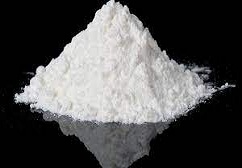CO2 & Water Extracted Caffeine

Decaffeination Process CO2 Process
This process of extraction of caffeine is called CO2 method or Liquid Carbon Dioxide method or Supercritical
Carbon Dioxide method but it is technically known as Supercritical Fluid Extraction. In basic terms - the
supercritical CO2 acts selectively on the caffeine, releasing the alkaloid and nothing else. Water-soaked coffee
beans are placed in an extraction vessel. The extractor is then sealed and supercritical CO2 is forced into the
coffee at pressures of 1,000 pounds per square inch to extract the caffeine.
The CO2 acts as the solvent to dissolve and draw the caffeine from the coffee beans, leaving the larger-molecule
flavor components behind. The caffeine-laden CO2 is then transferred to another container called the absorption
chamber where the pressure is released and the CO2 returns to its gaseous state and evaporates, leaving the
caffeine behind.
The caffeine is removed from the CO2 using charcoal filters, and the caffeine free CO2 is pumped back into a
pressurized container for reuse on another batch of beans.
Water Extraction Decaffeination Process
This is a natural water decaffeination process. This method of extraction of caffeine is also known as Swiss
Water Process. This method is based solely on water and carbon filtration. In this process a batch of Green
coffee beans and pure water are loaded together into a tank that is agitated or stirred. This mixture is heated
to the temperature set to start the extraction process.
Pure water H2O is a solvent but it is not a selective solvent to extract only caffeine from coffee beans. The
water will extract almost all water soluble substances from coffee and the solution obtained is composed of
coffee flavors and caffeine. The beans are discarded, and the resulting flavor-rich water (called “green coffee
extract”) is passed through a carbon filter that is sized to capture only the large caffeine molecules.
That decaffeinated green coffee extract is then used to wash another batch of coffee beans. Since the green
coffee extract is already loaded with the water-soluble extracts of the coffee beans, this time, only the
caffeine is extracted from the new set of beans, without losing any of the flavors and oils from the beans. The
washing step is repeated until most of the caffeine has been extracted from the beans. The solution now deprived
of the caffeine is still rich of coffee aromas which are sent back favoring the caffeine stripped coffee.
After this stage, the residual aqueous solution is concentrated to suitable conditions without the caffeine.
When full concentration of flavors in the solution is reached, the reincorporation phase begins.
This stage consists in putting the coffee in contact with the concentrated solution in suitable conditions to
facilitate penetration of the flavoring in the coffee bean, thus reintroducing the beans original flavor
extracted beforehand. The coffee is then dried and cooled. Finally the aroma rich coffee is bagged again. This
is the primary method used to decaffeinate organic coffee beans.
Enquiry Now

 +91-9509888778
+91-9509888778 



